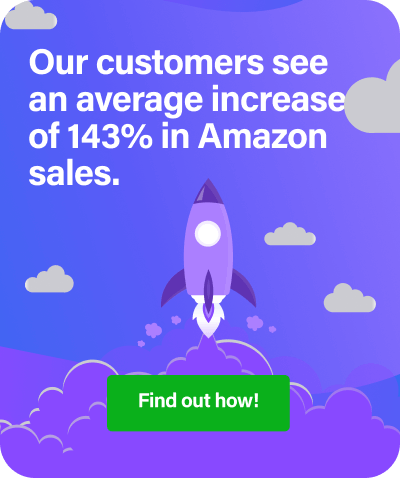One of the toughest parts about selling on Amazon is finding the right product to sell. Pick something too niche and you run the risk of nobody hearing of it or needing it. And pick something too popular and the competition will be incredibly stiff. Luckily, Repricer has seven pointers for you when it comes to narrowing the search on Amazon product selection.
1. Look for Products in the Goldilocks Price Range
The best-selling products tend to be in that sweet spot between inexpensive and expensive, and it’s usually between $20-50. If you’re wondering why:
- Moderately-priced items tend to be impulsively purchased more than expensive ones. The higher the price tag, the more a person thinks about what parting with that money actually means. They’ll do more research into whether or not they need the product, while with less expensive items, they won’t spend as much time comparing them to others.
- Really expensive products make it harder for you to get started. You’ll have to fork over a lot more money at the beginning to get started, which can be prohibitive for many sellers.
- At the opposite end of the spectrum, people generally associate inexpensive with cheap quality.
Learn more about Goldilocks pricing.
2. Items Sell Well When They’re Not Big and Heavy
It goes without saying that the more an item weighs, the more it’ll cost to ship. But the size of the package matters, too. Larger items go up the price list and this can cut into your profit margins. By picking something smaller and lighter, you can make shipping costs and FBA fees a lot more manageable.
Careful that you don’t go too light or small, though, as you don’t want the package to be crushed by something falling on it. This can also be a risk with heavy items or items with fragile inner parts, like glass or electronics. Try and pick something sturdy, durable and easy to hold.
3. You’re Familiar With the Product
You know the saying, ‘write what you know’? That extends to selling as well. The more familiar you are with an item, the easier and more truthfully you can write product descriptions for it. You’ll know just how to highlight its strongest features, and how to pair products with it to improve each respectively. Plus, the more passionate you are about a product, the better able you’ll be to convince others to give it a shot.
4. The Product Has Popular Keywords
It’s far easier to use the wheel as is than to try and reinvent it. When you come across a product that has keywords widely in use, put it on your shortlist right away. A good rule of thumb is that the top 2-4 keywords have roughly 100,000 searches for it each month, but keep that as a loose guideline.
You might have to temper expectations a bit if the product is in a more niche category, and you might want to stay away from a product if its keywords are too popular.
Related: 9 Tips to Boost Your Amazon SEO and Keyword Research
5. Look for a Combination of Rank and LQS
A top-ranked product means it sells well, while the Listing Quality Score (LQS) describes the product’s selling length, keyword richness, bullet points and description. Your goal is to find a product with a low-rank score (which means it’s closer to the top) and an LQS that’s at least 70.
6. Look for Products That Don’t Have Too Many Reviews
Reviews are a necessary part of selling any product successfully, but be careful of picking a product that has too many reviews. This is because you’ll be facing incredibly fierce competition, while a product with fewer reviews makes it easier for you to amass more 5-star ones — which positively affects your rating and increases your chances of getting to the top of the pile.
7. Calculate Product Margin to be 25% or Less
When thinking about product selection, the best items tend to be 25% or less than what they’d sell for on Amazon. This might sound like a bit of math, but it’s quite simple: estimate how much profit you’d make on each unit and what the return on investment would be.
There are many tools out there that do this for you, so look for one that includes the following boxes:
- Product cost
- Product price
- Product size
- Product weight
- Monthly storage fees
- Pick and pack fees
- Monthly sales (estimate)
- Total FBA fees
- Product profit (per unit)
- ROI
Sometimes it might be the more expensive or lower-selling item that nets you the most profit, so look very carefully at product margins.
Related: 7 Ways to Increase Your Amazon Profit Margins
Get Your Pricing Right
After you’ve managed the right products to sell, the next project to tackle is pricing them just right. But instead of doing that by hand, there’s a much easier way of going about it: Repricer. Pricing products individually is definitely not something that has to be done manually, so sign up now to get going and enjoy the first 14 days free.



